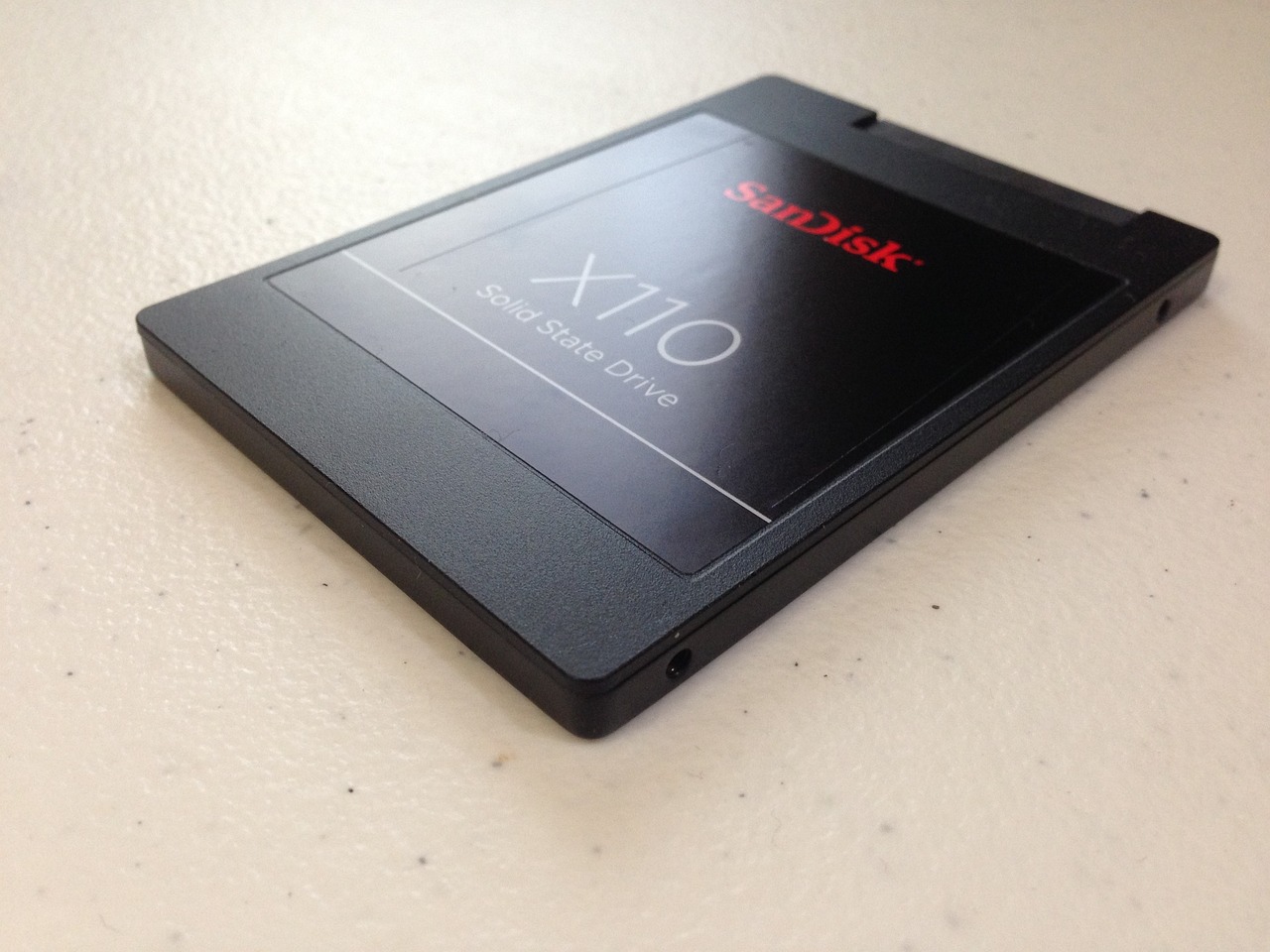The Genesis of SSDs
In the world of data storage, the Solid State Drive (SSD) has emerged as a groundbreaking technology, but how did it all begin? Contrary to popular belief, the history of SSDs doesn’t coincide with the rise of the personal computer era in the late 20th century. The concept of SSDs was, in fact, first introduced in the 1950s.
IBM was the company at the forefront of this development, with their team led by Reynold B. Johnson, the inventor of the hard disk drive. In 1956, IBM developed a unit of storage called the 350 Disk Storage Unit as a component of the IBM 305 RAMAC (Random Access Method of Accounting and Control) computer. Although this early model was not an SSD by today’s standards, it laid the foundation for the technology’s evolution. These units employed a similar principle to modern SSDs – random access, meaning any byte of storage can be accessed without touching the preceding bytes.

The 1970s and 80s: SSDs Come to Life
The first true SSDs came into existence in the 1970s and 80s. These were designed by companies like StorageTek and EMC, which made SSDs for their mainframe computers. StorageTek’s 4305 disk drive, introduced in 1978, was a plug-compatible replacement for an IBM hard disk drive, using charged coupled devices for storage and boasted a whopping 45MB capacity.
The 1980s marked significant advancements in semiconductor memory technology. In 1987, Dataram started selling a product called Bulk Core, an SSD that used volatile random-access memory (RAM) to improve the performance of large mainframe and minicomputers.
1990s: The Emergence of Flash-Based SSDs
The 1990s ushered in the era of flash-based SSDs. SanDisk, led by Dr. Eli Harari, played a pivotal role during this period. In 1991, SanDisk produced a 20MB SSD that was sold as an option for IBM’s ThinkPad line. This was the first SSD made available for personal computers.
While these drives were faster and more reliable than the hard disk drives of the time, they were also incredibly expensive, which limited their use to certain high-end applications. However, the development of cheaper, more efficient NAND flash memory in the late 1990s and early 2000s brought SSDs within the reach of everyday consumers.
The 2000s: The Rise of Consumer SSDs
The 2000s were a turning point for SSD technology, as it started to become more affordable and accessible. Companies like Samsung and Toshiba began mass production of NAND flash-based SSDs.
Samsung introduced the first SSD with a SATA interface in 2006, which allowed SSDs to be used as drop-in replacements for hard disk drives in computers. Toshiba also played a significant role in the SSD industry by inventing the first NAND flash memory in 1984 and making crucial contributions to its development.
The 2010s and Beyond: The SSD Revolution
The 2010s marked a rapid evolution in SSD technology. This period saw an increased adoption rate of SSDs in consumer electronics, thanks to their performance benefits over traditional HDDs. Innovations such as multi-level cell (MLC) and triple-level cell (TLC) NAND allowed SSDs to store more data per cell, making them more cost-effective.
In 2013, PCIe-based SSDs started to emerge. These SSD:s leveraged the PCIe (Peripheral Component Interconnect Express) interface, which offers a more direct connection to the motherboard and thus, higher speeds compared to SATA-based SSDs. Around the same time, NVMe (Non-Volatile Memory Express) was developed as a new standard specifically for SSDs to take full advantage of the capabilities of PCIe. NVMe SSDs, with their superior performance, quickly became the go-to choice for high-performance computing needs.
Evolution of SSDs into the 2020s
The 2020s saw SSD technology continue to evolve at a rapid pace. QLC (Quad-Level Cell) NAND was introduced, which allows for even greater storage density than its predecessors. Meanwhile, advancements in 3D NAND technology, where flash cells are stacked vertically, have dramatically increased the storage capacity of SSDs, reaching into multiple terabytes.
Also noteworthy is the introduction of Optane technology by Intel, which further revolutionized SSDs. Intel’s 3D XPoint (pronounced cross-point) technology, used in Optane drives, offers significantly higher endurance and lower latency than traditional NAND, albeit at a higher price point. This technology opened up new possibilities for SSDs in enterprise and high-performance computing environments.
The Current State of SSDs
In the present day, SSDs have become ubiquitous in computers, from high-end servers to everyday laptops and even game consoles. They are preferred over HDDs for their speed, reliability, and silent operation. SSD prices have continued to fall, making them an affordable option for most consumers.
Furthermore, SSDs are moving towards even more advanced technology, like PLC (Penta-Level Cell) NAND, which promises to offer even higher storage capacities. Emerging technologies, such as NVMe over Fabrics, aim to deliver high-performance, scalable, and flexible storage infrastructure.
Looking Towards the Future
While it’s impossible to predict the exact trajectory of SSD development, one thing is clear: SSD technology will continue to evolve. New advancements will push the boundaries of speed, capacity, and efficiency, allowing for an even wider range of applications. From their origins in the 1950s to their present-day ubiquity, SSDs have truly revolutionized the world of data storage. It’s exciting to imagine what the next evolution of SSDs might look like as we venture further into the digital age.
